Following on from yesterday’s post on the ‘Family Tree’ of design options for the Toob keys, I’d like to talk you through;
This concept sees the spring which holds the key shut, not as an additional component, but as being integral to the structure of the key;
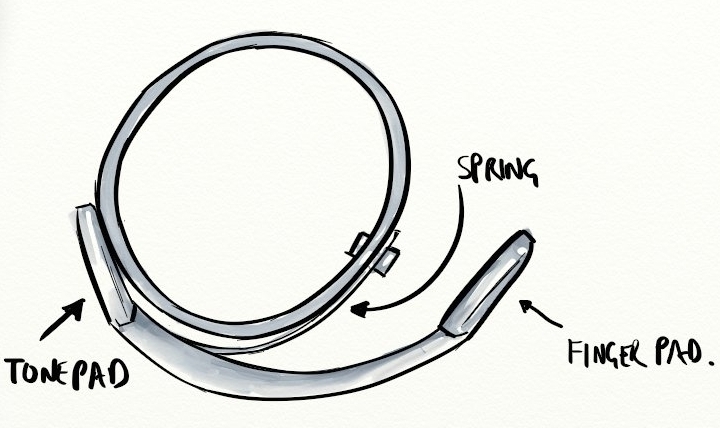 The sketch above explores the extreme case where there really is no pivot action at all and the key rolls across the whistle tube. This seemed to need your finger to travel further than on the traditional key, so we looked again at having a more defined pivot form on the surface of the whistle tube or integrated into the key form;
The sketch above explores the extreme case where there really is no pivot action at all and the key rolls across the whistle tube. This seemed to need your finger to travel further than on the traditional key, so we looked again at having a more defined pivot form on the surface of the whistle tube or integrated into the key form;
Taking the ‘pivot on key’ approach as being the simpler;
We then got ourselves away from the computer and made a quick sketch model in the workshop to test the feel of this kind of action.
The leaf spring itself was clamped solidly against the whistle body, and the spring force held the tonepad end of the key against the body well. The two short grub screws acted as our ‘pivot forms’ and allowed us to adjust the playing height. The action did work, and had the interesting effect of being quite ‘floaty’ and analogue, which could be interesting for certain playing styles with bends on notes. Likely it was far too ‘floaty’, but that could be tune-able by changing the spring length and the pivot position. What did feel like a major weakness however was how the key responded to off centred finger pressure, this is important as most of the keys will have a short dog leg to allow the key to be reached comfortably from just above or below where the tone hole actually needs to be. If you pressed on the very edge of the key in the model above to simulate this, you then found that the key would lift itself off of the body at an angle. You can see this in the photo below right where the pivot is starting to come away from the slight indents in the Toob body used to locate the pivots;
Our conclusion from this exercise was that the concept was interesting and very minimal and elegant, but that the need to have our offset fingerpads would mean a return to the drawing board…

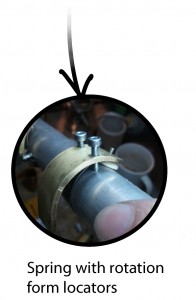
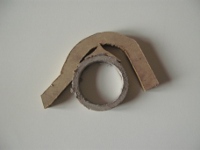
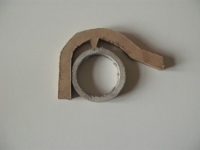
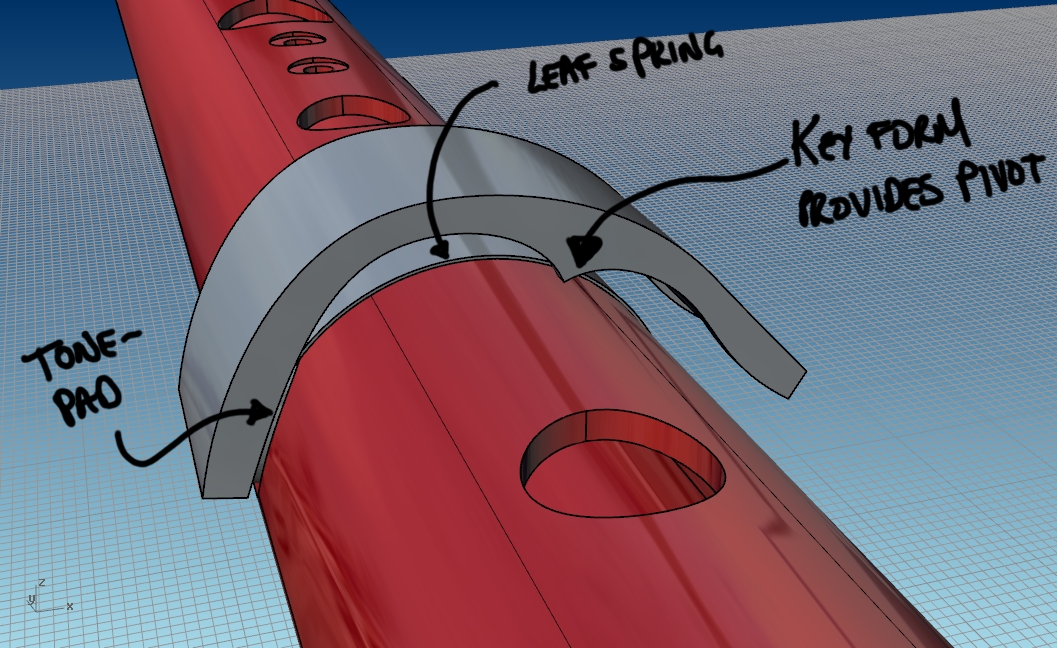
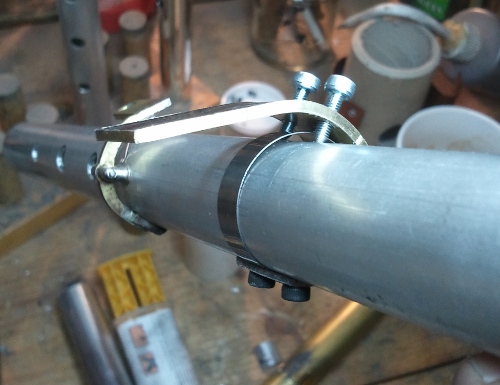
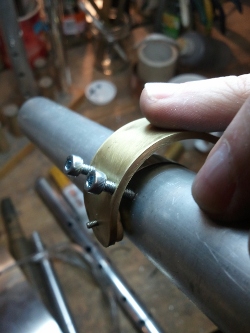
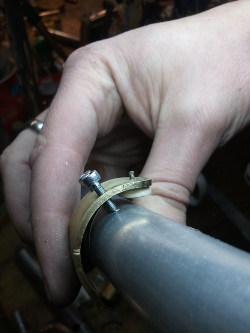
4 replies on “Design Options – In Depth: Part 1”
I do like the potential simplicity of this key approach and wonder if the concept might still be saved for offset toneholes. Could, for instance, a more complex pivot shape limit or control the direction of movement, no matter where the keytouch happens?
On the computer generated diagram, could the pivot be shaped not as an edge but most of a cylinder with a close fitting “most of a tube” on the body of the whistle? The key could then be slid into place but couldn’t twist. I like the idea of a floaty key, especially if it could be adjusted for floatiness by the user.
I’d better start saving up!
Thanks Kevin and Steve for your encouraging comments! Yeah, maybe there is still some life in this concept. You’ve both picked up on the issue that’s stumped us with this particular arrangement, the offset key. I think it’s definitely something we’ll keep open, finding a form that supports the motion fully, without necessarily being a traditional pivot or pin. After all the motion is only a small rotation. We just need to make sure that whatever we settle on keeps the clean and elegant lines of the existing MK whistles.
@Steve, I’m interested that ‘floatiness’ appeals to you, great suggestion about having it user adjustable.
The idea as seen above actually came along as a later iteration of an earlier simpler concept as shown in this video. I got really excited about this idea for a while because of its simplicity. It certainly starts to move towards the ‘floaty’ key you’re talking about Steve.
http://www.mkwhistles.com/video/simple-leaf-spring-key.html